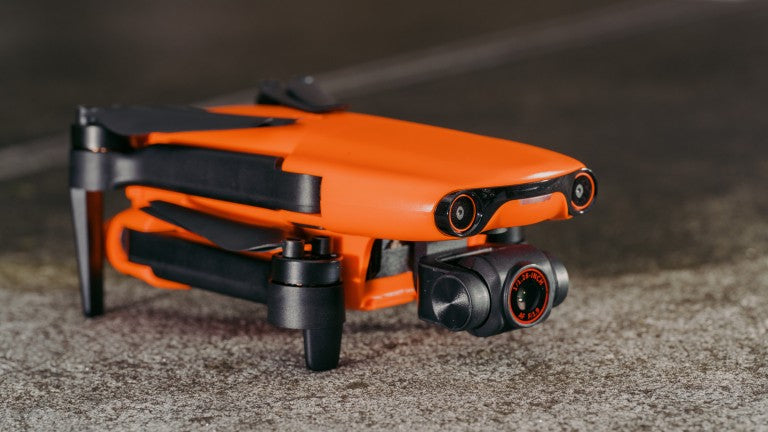What is A Drone Gimbal?
The drone gimbal can be mounted or hand-held on the drone, so it enables drone pilots to record videos or take pictures during flight without any vibration.
There are two types of drone heads; 2-axis and 3-axis heads. Three axis heads are the most commonly used, they use 3 brushless motors to keep the camera stable in all 3 axes (pitch, yaw, roll) while the drone is flying.
Specially designed algorithms also help stabilize the camera, and they can detect motion, such as tracking shots and panning. This way, the camera can record and take pictures in the air as if it were floating.

Autel Drone Gimbal Axis Movement
Yaw: The yaw movement is the lateral movement of the gimbal (camera) to the left or right. Most drone heads have 360-degree motion. If your drone is equipped with a retractable landing gear, the device provides a full 360-degree field of view for the gimbal camera.
Roll: A positive roll angle lifts the gimbal (camera) to the left or right. Taking the most popular EVO Lite series purchased by Autel drones, the roll angle is -45°~45°.
Tilt: Allows the gimbal and camera to move up and down. You can see that it moves from -135° to 45°.
Rotation: The world's first Autel EVO Lite drone with a four-axis gimbal design, with a rotation angle of -400°~400°, allows you to shoot vertical videos for easy editing and sharing on mobile devices.
Advantages and Disadvantages of Drone Gimbal
Advantage:
Camera stabilization is the biggest benefit of using a drone gimbal. No matter which direction the drone is heading, and how often it makes quick, sharp turns, the camera will always point in the right direction, and you'll get the most stable footage without vibration.
Better pictures - even when the drone is flying in relatively bad weather conditions, the pictures will be sharp.
Use a long lens – By using the gimbal in your drone, you are free to use a long lens for your camera. This ensures a wider range of photos to please any aerial photography enthusiast.
Side Shot - You don't have to worry about orienting the drone in a specific direction to get a good shot. Since the gimbal can rotate the camera and take photos from the left and right sides of the device, you can simply fly downwind and still get high-quality photos.
Shortcoming:
Power consumption - A good and efficient gimbal tends to draw more power from the drone's battery, causing the battery to drain very quickly.
Shorter flight times - Drones now offer shorter flight times due to the excessive power consumption of the gimbal.
Price - Some gimbals can be very expensive and add to the overall cost of your drone.
In Conclusion
As we've seen, adding a gimbal reduces vibration and another unwanted movement of the camera while the drone is flying. Therefore, an ideal gimbal should provide maximum accuracy, good image quality, lower power consumption, etc. Using a gimbal improves image quality, especially video, as it helps keep the camera steady even when the drone is flying at high speeds. Different drones use different gimbal depending on the type of camera used.








